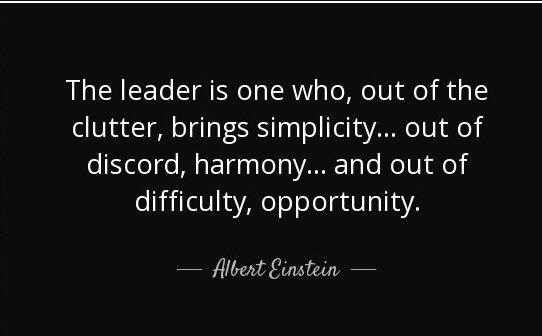Lesson 3: Leading in the Current Health Environment

Learning Objectives
- To understand key aspects of crisis leadership and analyze how these characteristics are understood and enacted in the current health environment.
- To understand how to manage in a complex health environment.
- To reflect on the tasks and responses that public health leaders have had to engage during the pandemic.
Overview
We are in a challenging time for public health and leadership in relation to COVID-19. This has spurred on numerous discussions about effective leadership styles in times of crisis and extreme organizational complexity. To this end, I have curated a number of articles that link to crisis leadership in public health emergencies (Deitchman, 2013; Halverson et al., 2021) and the another reading that focuses on required technical, interpersonal, conceptual and emotional intelligence skills required to be effective (Htway & Casteel, 2015).
I have also provided links to other very current readings on leadership during COVID-19. This is definitely an important and emerging topic of interest and leadership responses and styles will be analyzed for years to come as we emerge from the pandemic and move in to a period of recovery. Understanding leadership styles generally, leadership during a pandemic and now thinking about what is required of public health leaders as they support community to recover will be an interesting area to follow and think about in any public health role.
When reading these articles, I hope you are able to glean essential aspects of leadership in times of crisis as well as system thinking, complexity science/theory (from the video) and develop an understanding of how some leaders have managed to make changes that align to current and future changes that will occur in the health environment.
With each reading I have also linked in a news article that aligns with this article to highlight the real world and current context of the topic in relation to leadership.
 Video
Video
“How to lead in a crisis”, by Amy C. Edmondson. TED: The Way We Work.
Summary
Dr. Amy Edmondson is one of the most well renown scholars in the area of organizational theory with a specific focus on psychology safety. Her work stems from her early project in a health care organizations where she she found notice that when individuals felt more psychological safe in their teams and environments they were more trusting of teams, leadership and were able to perform their jobs to a greater extent. This can also be extended to the notice of leadership during a crisis which she has outlined in this video.
In the video it is outlined that during upheaval people crave security which means that often times leadership will focus on behaviors that exhibit strength, confidence and constancy. However, what is really needed is for leaders to be transparent and humble and admit when they do not know something. This is when people feel more psychologically safe. Dr. Edmondson also outlined that leaders need to act with urgency and communicate often even in the face of a lack of information. The third aspect is to focus on values as a guiding light when a lot of things are uncertain. It is essential to keep the values at the core of decision making. Sharing power with those around you is another important behavior in times of uncertainty. This provides a sense of meaning to those around you in the work that needs to be done.
 Readings
Readings
Enhancing Crisis Leadership in Public Health Emergencies – Deitchman 2013
In this article, Deitchman (2013) provides a review leadership in numerous environments and links these to public health. Crisis is defined as “a serious threat to the basic structures or fundamental values and norms of the social systems which – under time pressure and highly uncertain circumstances – necessitates making critical decisions.” (p. 535). This means that leaders must be able to recognize the crisis, make quick decisions, communicate effectively and work within the boundaries of centralization with delegation. This is a tricky place to function as a leader. Deitchman (2013) determined that there are six key attributes that need to be part of crisis leadership which include competence in public health science, decisiveness, situational awareness, coordination, communication and inspiring trust.
When reading this article you may want to think about the leaders you chose for your assignment and how they exhibit (or not!) these key attributes.
Public Health Leadership in a Crisis: Themes from the Literature – Htway and Casteel 2015
This review literature outlines public health leadership in times of crisis to develop common themes of skills which aligned to technical, interpersonal, and conceptual skills together with emotional intelligence. How these work together follows the phases of the crisis.
- Technical – Knowledge of Crisis
- Interpersonal – Active crisis period
- Conceptual – Preplanning and preparation for crisis
- Emotional Intelligence – Crisis communication
Thinking about the article you just read, I am sure that you can think about leaders through the pandemic who have demonstrated these types of behaviors and traits that would further outline who they are as leaders. For example, Dr Bonnie Henry’s emotional intelligence and leadership approach has been outlined as effective in the beginning and the current stages of the pandemic: ‘So human’: B.C. health officer praised for her compassion after tearing up during COVID-19 briefing – CBC – March 8th, 2020
Crisis Leadership in a Pandemic – Pfeifer 2020
This two page article came out at the very beginning of the pandemic from an extremely well known scholar that has some interesting perspectives and ideas that were aimed at supporting leaders in the development of initial plans and strategies to deal with COVID. This article speaks to principles learned in other crisis and how these can be applied to the current pandemic. These are focused on connection, collaboration, coordination and command and control all of which continue to be important aspect of leadership at this time.
Online Leadership Quiz
I have found a number of online tools that allow individuals to answer questions to help highlight your own personal leadership styles and skills. I have provided these as a way for you to reflect on the course materials and identify area for your own consideration for improvement or to harness as major individual strengths. Here is one for this week!
Mind Tools: This is a short quiz that provides you with the leadership style that you would naturally lean towards. It also provides some alternative leadership styles that would be helpful in the event where your traditional style may not be appropriate. You will be given a score that corresponds to the questions asked and there is a score interpretation sheet on the website to explain your leadership style.

